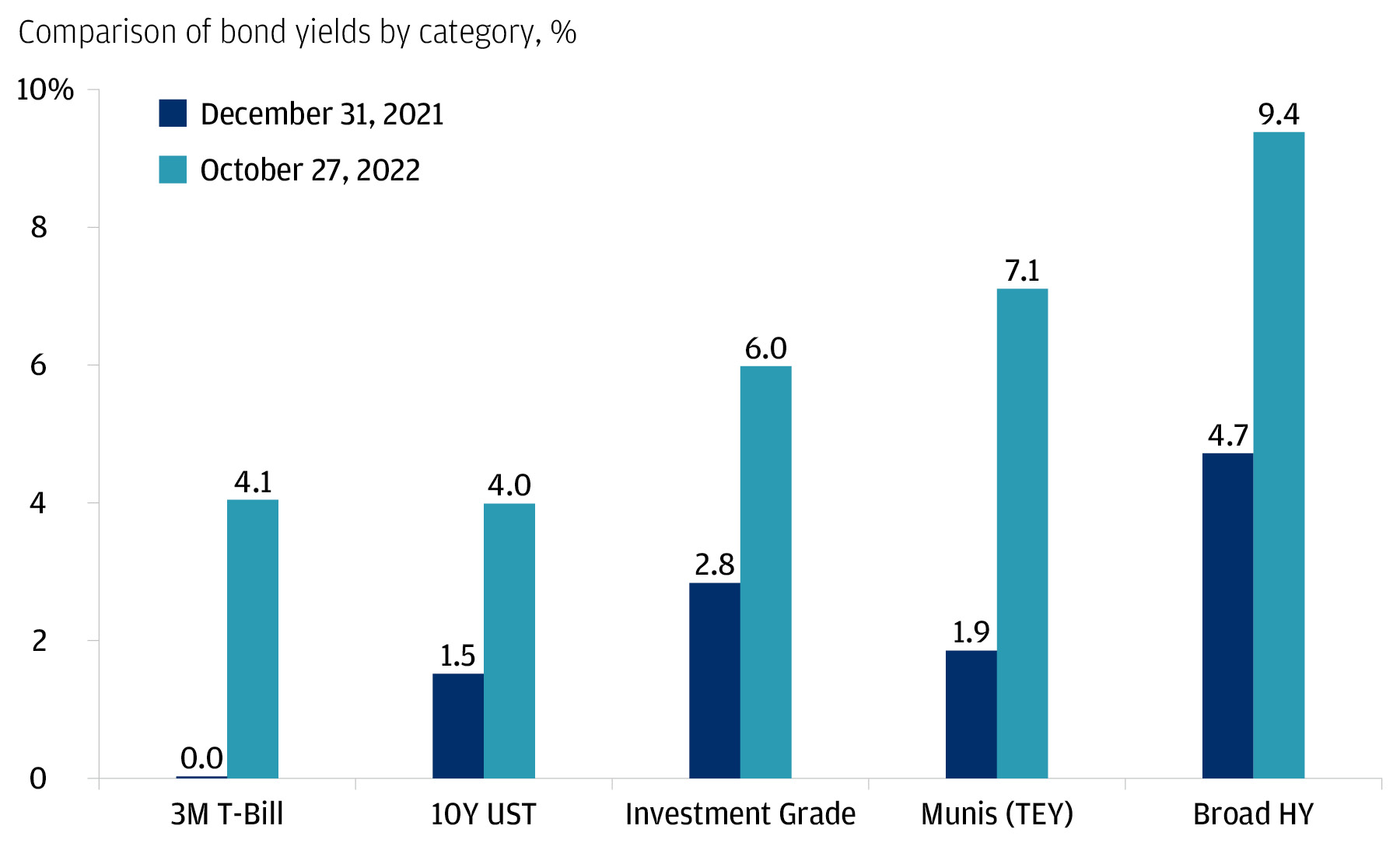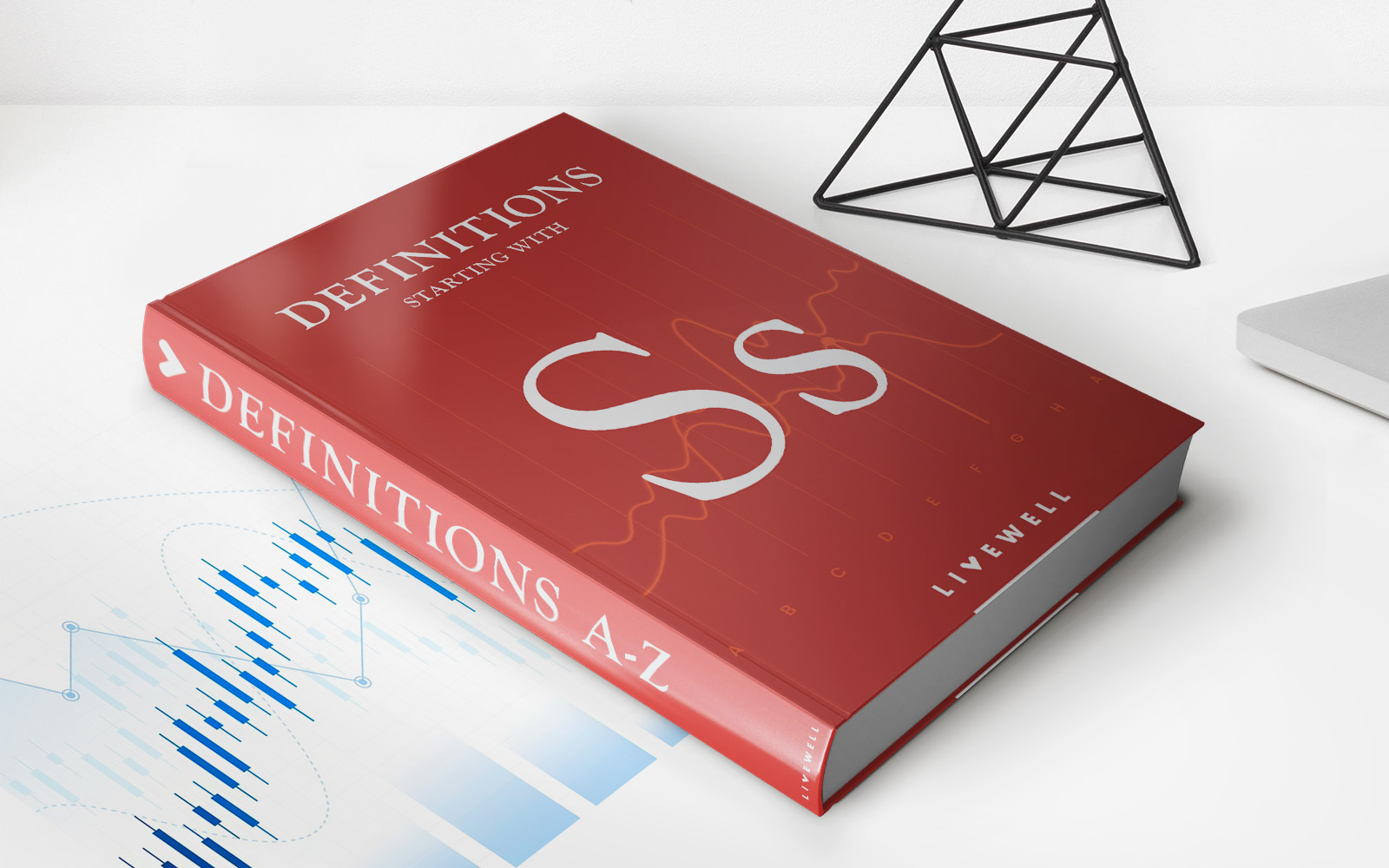Home>Finance>At What Point Does It Make Sense To Consider Taking Out Private Student Loans?


Finance
At What Point Does It Make Sense To Consider Taking Out Private Student Loans?
Published: January 20, 2024
Considering private student loans for financing your education? Discover when it's the right time to explore this option and make informed financial decisions.
(Many of the links in this article redirect to a specific reviewed product. Your purchase of these products through affiliate links helps to generate commission for LiveWell, at no extra cost. Learn more)
Table of Contents
- Introduction
- Understanding Private Student Loans
- Factors to Consider
- Assessing Financial Needs
- Evaluating Repayment Options
- Comparing Interest Rates and Terms
- Credit Score and Cosigner Considerations
- Applying for Private Student Loans
- Loan Limits and Eligibility Requirements
- Benefits and Drawbacks of Private Student Loans
- Alternative Funding Options
- Conclusion
Introduction
When it comes to financing higher education, many individuals turn to student loans to help cover the costs of tuition, books, and other expenses. While federal student loans are typically the go-to option for most students, they may not always be enough to cover the full cost of education. In such cases, considering private student loans becomes a viable option.
Private student loans, also known as alternative or supplemental loans, are offered by banks, credit unions, and private lenders. Unlike federal loans, private student loans are based on the borrower’s creditworthiness and often require a co-signer. These loans can be used to supplement federal aid or cover the entire cost of education, depending on the student’s needs.
However, taking out private student loans is a significant financial decision that warrants careful consideration. It is crucial to evaluate whether it makes sense to pursue this route and understand the implications it may have on your financial future.
In this article, we will explore the various factors you should consider when deciding whether to take out private student loans. We will discuss important aspects such as assessing your financial needs, evaluating repayment options, comparing interest rates and terms, and understanding the impact on your credit score. Additionally, we will examine the application process, loan limits, eligibility requirements, and explore alternative funding options.
By understanding the ins and outs of private student loans, you can make an informed decision that aligns with your financial goals and ensures a smooth academic journey. So, let’s dive in and explore the various aspects to consider before taking the leap into private student loans.
Understanding Private Student Loans
Private student loans differ from federal student loans in several ways. While federal loans are funded and regulated by the government, private student loans are provided by banks, credit unions, and other financial institutions. These loans are typically used to bridge the gap between the cost of education and the amount of federal aid received.
One of the primary differences between private and federal student loans is the borrower’s eligibility criteria. Federal loans are available to almost all students, regardless of their credit history or financial situation. On the other hand, private student loans require a good credit score and may require a co-signer, particularly for students who have limited credit history or income.
Furthermore, private student loans offer different interest rates and repayment terms compared to federal loans. Private loans often have variable interest rates, which means they can fluctuate over time, whereas federal loans typically have fixed interest rates. The repayment options for private loans may also vary and can range from making interest-only payments while in school to full principal and interest payments.
It is important to carefully review the terms and conditions of private student loans before committing to them. Understanding the interest rates, repayment options, and any potential fees or penalties will help you make an informed decision.
In summary, private student loans are provided by private financial institutions and can be used to supplement federal aid or cover the full cost of education. They have different eligibility criteria, interest rates, and repayment terms compared to federal loans. Before considering private student loans, it is essential to thoroughly understand the terms and conditions, carefully assess your financial needs, and evaluate the potential impact on your long-term financial goals.
Factors to Consider
Before taking out private student loans, it is crucial to consider various factors that will impact your financial well-being in the long run. Below are some key considerations to keep in mind:
1. Assessing Financial Needs:
Evaluate your financial situation and determine how much funding is needed to cover your education expenses. Consider tuition, books, housing, and any other associated costs. It is essential to borrow only what is necessary to avoid excessive debt.
2. Evaluating Repayment Options:
Research and understand the different repayment options available for private student loans. Compare and analyze how each option will fit into your budget post-graduation. Determine if you can afford to make monthly payments and whether a longer or shorter repayment term is more suitable for your financial circumstances.
3. Comparing Interest Rates and Terms:
Thoroughly review and compare the interest rates and terms offered by different private lenders. Understand if the interest rate is fixed or variable, and determine how it may affect your monthly payments and overall loan cost. Look for favorable terms such as no prepayment penalties or options for interest rate reductions.
4. Credit Score and Cosigner Considerations:
Recognize the importance of your credit score when applying for private student loans. Lenders typically require a good credit history, and if you have a limited credit history, having a co-signer can improve your chances of approval and potentially secure a lower interest rate. However, ensure both you and your co-signer understand the implications and responsibilities associated with the loan.
5. Applying for Private Student Loans:
Research and compare different private loan options before making a decision. Gather the necessary documentation and information required for the application process, including personal identification, income verification, and academic details. Be prepared to provide relevant information to lenders to ensure a smooth application process.
By considering these factors, you can make a well-informed decision about whether taking out private student loans is the right choice for you. It is crucial to understand the financial implications and weigh the potential benefits and drawbacks before borrowing to cover your educational expenses.
Assessing Financial Needs
Assessing your financial needs is a critical step before considering whether private student loans are necessary. It involves evaluating your total cost of education and identifying any funding gaps that may exist. Here are some key points to consider:
1. Calculate the Cost of Education:
Determine the total cost of your education, including tuition fees, textbooks, accommodation, transportation, and other necessary expenses. Take into account any expected changes in expenses over the course of your studies.
2. Consider Available Resources:
Assess the financial aid you have already received, including grants, scholarships, and federal student loans. Be sure to explore all your options for free or low-cost assistance before relying on private student loans.
3. Identify Funding Gaps:
Compare the total cost of education with the available resources. If there is a shortfall, that is the funding gap. It is the amount you will need to cover through alternative methods such as private student loans.
4. Determine Borrowing Needs:
Decide how much you need to borrow to fill the funding gap. Remember to only borrow what is necessary to keep your loan burden manageable. Consider factors such as future income potential, career prospects, and your ability to make loan repayments after graduation.
5. Explore Other Financial Aid Options:
In addition to private student loans, investigate other financial aid options that may be available. Research grants, work-study programs, employer tuition reimbursement, or crowdfunding platforms that could help supplement your funding needs.
By assessing your financial needs, you can determine whether private student loans are the most appropriate solution for you. Remember to carefully consider your borrowing needs and explore all other viable financial aid options. It is crucial to strike a balance between funding your education and avoiding excessive debt.
Evaluating Repayment Options
When considering private student loans, it is essential to evaluate the repayment options available to ensure they align with your financial capabilities and long-term goals. Here are some factors to consider when evaluating repayment options:
1. Graduated Repayment:
Some private lenders offer graduated repayment plans, where the initial payments are lower and gradually increase over time. This option can be beneficial for borrowers who anticipate increasing their income steadily after graduation.
2. Income-Driven Repayment:
While income-driven repayment plans are more commonly associated with federal student loans, some private lenders may offer similar options. These plans calculate monthly payment amounts based on your income, making them more manageable during periods of lower earnings.
3. Interest-Only Payments:
Interest-only payment options allow borrowers to make payments towards the interest accrued on the loan while in school, reducing the overall loan balance. This can help prevent interest from capitalizing and increasing the total cost of the loan.
4. Full Principal and Interest Payments:
Making full principal and interest payments while in school can save you money in the long run. By paying down the principal early, you can reduce the overall interest paid over the life of the loan.
5. Repayment Term Length:
Consider the length of the repayment term offered by the lender. Longer terms result in lower monthly payments, but could lead to higher overall interest costs. Shorter terms may mean higher monthly payments, but ultimately result in less interest paid.
6. Prepayment Penalties:
Check if there are any prepayment penalties associated with the loan. Prepayment penalties can restrict your ability to pay off your loan early or make additional payments towards the principal balance. It is generally preferable to choose loans without prepayment penalties.
By carefully evaluating these repayment options, you can choose a plan that fits your budget and repayment goals. Remember to analyze each option’s pros and cons, considering both immediate and long-term financial implications.
Comparing Interest Rates and Terms
When considering private student loans, one of the most crucial factors to consider is the interest rate and the terms offered by different lenders. Here are some key points to keep in mind when comparing interest rates and terms:
1. Fixed vs. Variable Interest Rates:
Determine whether the interest rate is fixed or variable. A fixed interest rate remains the same throughout the life of the loan, providing stability and predictable monthly payments. Variable interest rates, on the other hand, can fluctuate over time, potentially resulting in higher or lower payments.
2. Interest Rate Discounts:
Check if the lender offers any interest rate discounts. Some lenders provide incentives such as automatic payment discounts or loyalty discounts for borrowers who meet certain criteria. These discounts can help lower the overall loan cost.
3. Interest Capitalization:
Understand how and when interest capitalizes. Capitalization occurs when unpaid interest is added to the loan principal, increasing the total amount owed. Some lenders may capitalize interest annually, while others may do it at specific times, such as when you enter repayment. Minimizing interest capitalization can save you money in the long run.
4. Loan Fees:
Consider any loan origination or processing fees associated with the private student loan. These fees can vary between lenders and add to the total cost of borrowing. Be sure to factor in these fees when comparing the options available.
5. Repayment Terms:
Review the repayment terms offered by different lenders. This includes the length of the repayment term and any flexibility in adjusting the repayment schedule. Longer repayment terms may result in lower monthly payments, but can lead to more interest paid over time.
6. Co-Signer Release:
Find out if the lender offers a co-signer release option. A co-signer release allows the responsible party to be removed from the loan after a certain period of on-time payments have been made. This can provide independence and financial flexibility for borrowers.
By carefully comparing interest rates, terms, and additional loan features, you can make an informed decision about the most suitable private student loan for your needs. Remember, choosing the right loan involves considering both short-term affordability and long-term financial implications.
Credit Score and Cosigner Considerations
When applying for private student loans, your credit score and the option of having a cosigner can significantly impact the loan approval process and the terms offered by lenders. Here are some key considerations related to credit score and cosigners:
1. Credit Score Importance:
Private lenders typically assess your creditworthiness before approving a loan. Your credit score is a numerical representation of your credit history and is used by lenders to evaluate your ability to repay the loan. A higher credit score often leads to more favorable loan terms, such as lower interest rates.
2. Credit Score Factors:
Understand the factors that contribute to your credit score, including payment history, credit utilization, length of credit history, and credit mix. By maintaining good financial habits and addressing any negative factors, you can improve your credit score over time.
3. Cosigner Advantages:
If you have a limited credit history or a lower credit score, having a cosigner with a strong credit profile can increase the likelihood of loan approval. A cosigner is someone who agrees to take responsibility for the loan if you’re unable to repay it. Having a cosigner can also help secure more favorable loan terms, including lower interest rates.
4. Cosigner Responsibilities:
It’s important for both you and your cosigner to understand the responsibilities and potential risks involved. If you miss payments or default on the loan, it can negatively impact your cosigner’s credit score and financial well-being. Open communication and a clear understanding of expectations are crucial when involving a cosigner.
5. Cosigner Release Options:
Some private student loan lenders offer cosigner release options after a specified number of on-time payments. This allows you to remove the cosigner from the loan agreement, making you solely responsible for repayments. Check with the lender about their specific requirements for cosigner release.
6. Building Credit Independently:
Using private student loans as an opportunity to build your credit history responsibly can benefit your long-term financial health. Making regular, on-time payments towards your loan and other credit obligations can demonstrate to lenders your creditworthiness, and potentially qualify you for better rates and terms in the future.
Remember, your credit score and the potential involvement of a cosigner can have a significant impact on your ability to secure a private student loan. Take the time to understand your credit situation, explore potential cosigner options, and make a well-informed decision that aligns with your financial goals and capabilities.
Applying for Private Student Loans
Applying for private student loans requires careful preparation and attention to detail. Here are the key steps involved in the application process:
1. Research Lenders:
Start by researching and comparing different private lenders. Consider factors such as interest rates, repayment terms, fees, cosigner requirements, and customer reviews. It’s important to choose a reputable lender that best suits your needs.
2. Gather Information:
Collect all the necessary information and documentation needed for the application. This may include personal identification, Social Security number, school enrollment details, income verification, and any relevant financial documents.
3. Check Eligibility Requirements:
Review the eligibility criteria set by the lender. This includes factors such as credit score minimums, income requirements, and enrollment in an eligible educational institution. Ensure you meet all the necessary criteria before proceeding with the application.
4. Consider a Cosigner:
If your credit history or income is insufficient to secure the loan on your own, consider having a cosigner. A cosigner with a good credit history can improve your chances of approval and potentially secure better loan terms. Ensure your cosigner understands the responsibilities and risks involved.
5. Compare Loan Options:
Thoroughly evaluate the loan options offered by different lenders. Compare interest rates, repayment terms, and any additional features or perks. Take note of any potential discounts or benefits that may be applicable to your situation.
6. Complete the Application:
Fill out the loan application accurately and provide all the required information. Double-check the application to ensure there are no errors or missing details that could delay the process. Be prepared to provide information about your desired loan amount and intended use.
7. Review and Sign the Loan Agreement:
Once your application is approved, carefully review the loan agreement before signing. Pay close attention to the interest rate, repayment terms, fees, and any other important provisions. Seek clarification if there are any aspects you find confusing or unclear.
8. Disbursement of Funds:
After signing the loan agreement, the funds will be disbursed according to the terms outlined. The funds are usually sent directly to your school’s financial aid office, who will apply them to your tuition and other educational expenses.
Remember to keep copies of all loan documents and correspondence for your records. Being organized and well-informed during the application process will help ensure a smooth and efficient experience.
Loan Limits and Eligibility Requirements
Private student loans have specific loan limits and eligibility requirements that borrowers must meet. Understanding these limits and requirements is crucial before applying for a private student loan. Here are the key points to consider:
1. Loan Limits:
Private student loan limits vary depending on the lender and the specific loan program. Unlike federal student loans, which have set limits based on the student’s year in school and dependency status, private loan limits are often determined by the total cost of attendance minus other financial aid received.
2. Maximum Borrowing Amount:
Different lenders have different maximum borrowing amounts. It is essential to research and compare lenders to determine which one can provide the amount you need to cover your education expenses. Keep in mind that borrowing the maximum amount may not always be advisable, as it can lead to high levels of debt.
3. Eligibility Requirements:
Eligibility requirements for private student loans can vary among lenders, but some common requirements include:
- A minimum credit score
- Proof of income or employment
- Proof of enrollment in an eligible educational institution
- U.S. citizenship or permanent residency status
- Age of majority (18 years or older)
4. Cosigner Requirements:
Lenders may also require a cosigner if the borrower has limited credit history or a low credit score. A cosigner is someone who agrees to repay the loan if the borrower is unable to do so. The cosigner typically needs to meet certain creditworthiness criteria and may need to provide proof of income or employment.
5. Financial Stability:
Lenders assess the borrower’s financial stability to determine eligibility. This may include evaluating income, employment history, and the borrower’s ability to meet loan repayment obligations.
It is important to thoroughly review the loan limits and eligibility requirements of each lender before applying. Understanding these factors will help you determine if you meet the criteria and if the loan amount offered will adequately cover your education expenses. Additionally, being aware of the eligibility requirements will allow you to prepare the necessary documentation and increase your chances of a successful loan application.
Benefits and Drawbacks of Private Student Loans
While private student loans can provide financial assistance when federal aid falls short, it is important to consider both the benefits and drawbacks before deciding to borrow. Here are some key advantages and disadvantages to keep in mind:
Benefits:
- Flexible Borrowing Limits: Private student loans often offer higher borrowing limits than federal loans, allowing you to cover the full cost of education.
- Additional Funding Options: Private loans can be used to supplement federal aid, scholarships, and personal savings, providing an extra source of funds.
- Customized Repayment Options: Private lenders typically offer more flexibility in terms of repayment options, allowing you to choose a plan that aligns with your financial goals and capabilities.
- Competitive Interest Rates: Depending on your creditworthiness, private student loans may offer competitive interest rates, potentially lower than those of federal loans.
- Fast Application and Disbursement: Private loans often have a streamlined application process, with quicker approval and disbursement timelines compared to federal loans.
Drawbacks:
- Higher Interest Rates: Depending on your credit profile, private student loans may come with higher interest rates compared to federal loans. This can result in more interest paid over the life of the loan.
- Creditworthiness Requirements: Private loans typically require a good credit history or a cosigner with strong credit. If you have a limited credit history, you may face challenges in obtaining favorable loan terms.
- Lack of Federal Benefits: Private loans do not offer the same borrower benefits and protections as federal loans, such as income-driven repayment plans, loan forgiveness options, or access to federal loan consolidation programs.
- Potential for Variable Interest Rates: Some private loans have variable interest rates that can fluctuate over time, making it challenging to predict and plan for future monthly payments.
- Potential for High Debt Burden: Borrowing beyond what is necessary or taking on excessive private loan debt can lead to a heavy financial burden after graduation, impacting your long-term financial goals.
Before making a decision, carefully weigh the benefits and drawbacks of private student loans. Consider your financial situation, repayment capabilities, and long-term goals. If you do decide to pursue private student loans, it is crucial to research and compare different lenders to secure the most suitable terms for your needs while being mindful of your financial responsibilities.
Alternative Funding Options
When it comes to financing your education, private student loans are not the only option available. Consider exploring these alternative funding options to help manage the cost of your education:
1. Federal Student Aid:
Before turning to private loans, it is essential to explore federal student aid options. Fill out the Free Application for Federal Student Aid (FAFSA) to determine your eligibility for grants, scholarships, work-study programs, and federal student loans. Federal loans often come with more favorable terms and borrower protections.
2. Scholarships and Grants:
Research and apply for scholarships and grants. There are numerous scholarships available based on various criteria such as academic achievements, extracurricular activities, field of study, or demographic background. Scholarships and grants do not need to be repaid, making them an excellent funding option.
3. Work-Study Programs:
Participating in a federal work-study program allows you to earn money to fund your education through part-time employment. Work-study jobs are typically located on-campus, and the income earned can help cover educational expenses.
4. Employer Tuition Reimbursement:
If you are already employed, check if your employer offers tuition reimbursement benefits. Many companies provide financial assistance for employees seeking to further their education. Take advantage of this opportunity to mitigate the need for additional borrowing.
5. Crowdfunding:
Consider utilizing crowdfunding platforms to raise funds for educational expenses. Platforms such as GoFundMe or Kickstarter can help you gather support from friends, family, and even strangers who believe in your educational pursuits.
6. Savings and Income:
If possible, tap into your personal savings or use income from part-time jobs or internships to fund your education. By contributing funds from your own resources, you can reduce the need for borrowing and minimize the overall loan burden.
By exploring these alternative funding options, you can supplement or even replace the need for private student loans. Take the time to research and apply for grants and scholarships, consider work-study programs, and leverage personal savings or income. By strategically combining these funding sources, you can reduce the amount you need to borrow, ultimately easing the financial burden of your education.
Conclusion
When deciding whether to take out private student loans, it is important to carefully consider various factors that will impact your financial future. While private student loans can fill the gaps left by federal aid, it is crucial to approach this decision with caution and thorough research.
Evaluating your financial needs, understanding repayment options, comparing interest rates and terms, and considering your credit score and the potential need for a cosigner are all important aspects to consider. By thoroughly assessing these factors, you can make an informed decision that aligns with your financial goals and capabilities.
Remember that private student loans come with both benefits and drawbacks. They can provide additional funds needed to cover educational expenses, offer competitive interest rates, and provide flexibility in repayment options. However, they may also come with higher interest rates, creditworthiness requirements, and lack the borrower protections offered by federal loans.
Before committing to private student loans, explore alternative funding options such as federal student aid, scholarships, grants, work-study programs, and employer tuition reimbursement. These options can help supplement your financial resources and potentially reduce the amount you need to borrow.
In conclusion, the decision to take out private student loans should be approached thoughtfully. Carefully assess your financial needs, weigh the advantages and disadvantages, and consider alternative funding sources before making a decision. By doing so, you can pave the way for a more manageable financial journey throughout your education and beyond.














